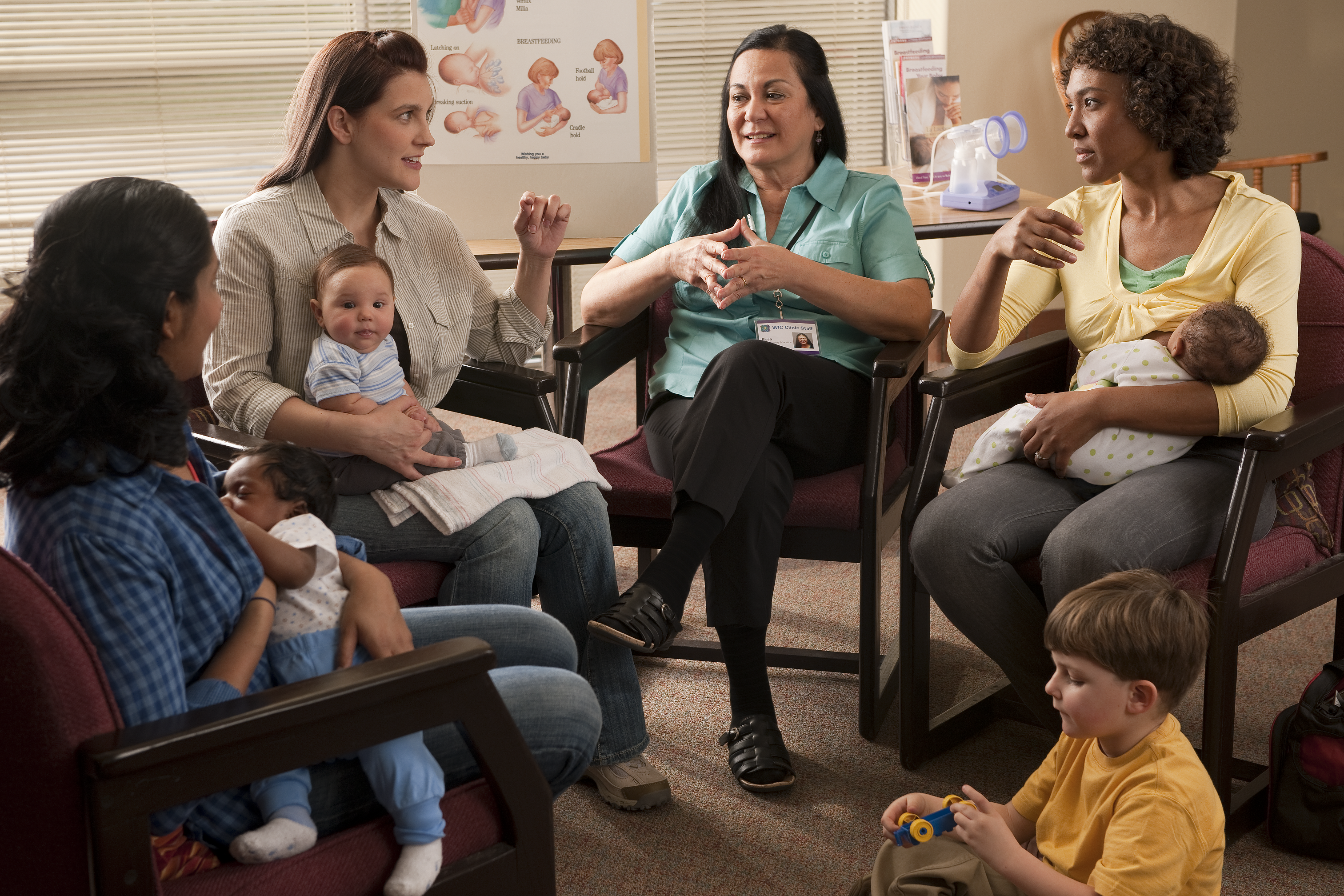
By Emily Bernard, IBCLC, NACCHO consultant in collaboration with Carol Lawrence, PhD, MS, BSN, RNC-OB and Lori Riddle, Lori H. Riddle, RD, LD/N, CLC Florida DOH and Lee Health
Synopsis
The Florida Department of Health in Lee County (DOH Lee) worked alongside three hospitals during NACCHO’s Reducing Breastfeeding Disparities through Peer and Professional Support project. DOH Lee’s project was designed to improve the county’s environment to support breastfeeding for black families through the establishment of a strategically developed coalition, as well as through the provision of advanced training of agency and hospital staff, other than nurses, to improve breastfeeding support within the hospital and the community. DOH Lee helped to implement the EMPower Breastfeeding Project by providing prenatal education and postpartum support to low-income, black families delivering in these enrolled hospitals.
Challenge
Although Florida breastfeeding initiation rates have already achieved Healthy People 2020 goals, inequities among African Americans are evident (See Table with rates comparison). Increasing the percentage of mothers who exclusively breastfeed is one of the core goals of the State Health Improvement Plan (SHIP). To achieve this goal, it is essential that hospitals and community agencies work together to support breastfeeding initiation and continuation. With funding from NACCHO, Lee Health and DOH Lee was able to develop a vital collaboration to boost breastfeeding rates.
| Florida 2014 | Lee County 2014 | |
| Average (2014) | 84.2% | 75.8% |
| African American (2014) | 75.1% | 59.9% |
The DOH Lee WIC (Women, Infants, and Children) program had previously implemented the Loving Support© Makes Breastfeeding Work to guide staff training, ensure the provision of quality client education and appropriate support, and expand outreach efforts. However, there was a lack of diversity in the lactation workforce, few coordinated breastfeeding efforts, and no community-wide discussions on these issues.
Solution
DOH Lee developed formal partnerships by establishing a local breastfeeding coalition to support the project. Under supportive leadership, they were able to use the same framework of the successful pre-existing countywide coalition by creating the project’s mission, vision and goals. The newly established diverse community-wide coalition identified effective strategies to address breastfeeding inequities in its community.
DOH Lee also provided professional lactation education to women within the targeted underserved community. The need for a higher level of support was identified in both hospitals and at WIC. Five candidates were selected to receive advanced breastfeeding training. Hospital policy prevented its staff from providing direct breastfeeding assistance without additional training; thus, the hospital scholarship recipients included two certified nursing assistants and one child advocate with no formal breastfeeding education. The remaining scholarship recipients worked for WIC as Breastfeeding Peer Counselors and had limited breastfeeding education. Both groups reported frustration that they could not help women and families with assistance when lactation issues arose.
In addition to training, these candidates also received a paid mentorship. DOH Lee believed that the bi-directional training between the hospital and WIC was imperative in order to address continuity of care. They wanted them to be exposed to each other’s setting to broaden perceptions, understand challenges faced with breastfeeding initiation immediately post-delivery, and the issues faced post-discharge. A policy for hospital staff training at the WIC clinic was developed, but the short grant period made it a challenge to complete the policy for WIC staff to go the hospital. These trainings required a high level of collaboration between the two systems and removing the barriers that frustrate and inhibit many short-term projects.
Results
As a result of this project, there was an improved continuity of care for low-income, African American and Hispanic families in Lee County. There is now a hospital-WIC policy in place and available trained staff, which allows for support during bedside “teachable moments” at the hospital. In addition, breastfeeding messaging is accurate and consistent, which is a result of the improved communication among partners.
Furthermore, the stand-alone breastfeeding coalition is growing and building momentum for lasting environmental changes and future policy. The countywide coalition, HealthyLee, incorporated breastfeeding as a health and nutrition improvement goal into the strategic plan for a healthy community. The breastfeeding coalition is now moving breastfeeding into the policy arena with participation on the infant mortality taskforce. They have also created a pathway for professional lactation education.
A significant project outcome was the development of a strong partnership among the county’s three local hospitals and the County Health Department. These newly formed partnerships have opened up communication to reduce barriers for clients between hospital and WIC offices. The training allowed for an increased potential staffing pool for future program growth and development. This grant opened up lines of communication that will improve breastfeeding support and reduce barriers along racial, ethnic, and economic fronts.
To learn more about DOH Lee County project, watch this webinar on Building Sustainable Projects through PSE Changes https://naccho.adobeconnect.com/_a1053915029/pmlwrb7ewnjw/. Continuing Education credits are available.
Contact info:
Carol Lawrence, PhD, MS, BSN, RNC-OB
Supervisor, Perinatal Practice, Education, Research, and Lactation [email protected] [email protected]
Lori H. Riddle, RD, LD/N, CLC
WIC Director



